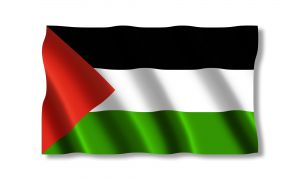Initial Responses
Palestinian Responses

The impact of the pictures of Al Dura on the Palestinians were instantaneous, explosive, and enduring. As soon as the footage ran – on Israeli TV – Israeli Arabs began to riot in a number of places, including Nazareth and Jaffa. This had not occurred among Israeli Arabs since the foundation of the state. It seemed as if a massive uprising (intifada) had begun. And the role of Muhammad’s picture is confirmed by every discussion of the issue, including the Ohr Commission’s report. As Dr. Sabikh, an Israeli Arab explained to Stephan Juffa of the Metula News Agency:
“You understand, Steph, when we saw these pictures [of Mohamed al-Dura], we said that there was a radical change in the way Jews considered us. We had never seen or imagined Israeli soldiers shooting a child to kill him, and for forty minutes. In the towns and villages, at Sakhnin, Nazareth, Rameh, we thought that if you had no pity for Arab children, you were going to massacre us all! So it was urgent to go out into the streets and show you that we were not about to give up and it would cost you dearly.”
The Israeli response to the rioting – some of it, like the earlier attack on Tuvya Grossman in Jerusalem, murderous – drew police fire, killing 13 Israeli Arabs, and further inflaming hatreds. Not only did the West Bank become hostile territory, but areas within Israel as well.
On the West Bank, rioting that had broken out in response to Sharon’s visit and subsequent crackdowns became widespread and far more deadly. The staggeringly violent affect it had can best be gauged by the fate of two army reserve soldiers who took the wrong turn and fell into the hands of the Palestinian police in Ramallah (seat of government of the PA, some dozen km from Jerusalem), some of whom, along with an enraged mob literally tore the policemen apart with their bare hands and dragged their body parts through the city. The savagery stunned journalists who witnessed it, who report hearing repeatedly “Revenge for the blood of Muhammed!“
Palestinian culture immediately seized upon this image of Muhammed al Durah and made it the icon of the Intifada – far more potent than any picture of Sharon on the Haram al Sharif. Palestinian TV inserted a picture from the riots in Nazereth into the footage, clearing up any ambiguity that might remain from Talal’s work, clearly indicating the Israeli soldier who killed Muhammed in cold blood.
Explaining why they did this, an official from PATV told Esther Schapira (Three Bullets and a Dead Child): “it’s an artistic way to tell the truth, and we never forget our journalistic commitment to tell the truth and nothing but the truth.”
For similar sentiments from Western pro-Palestinian advocates, see Adam Rose’s response to Fallows article in the Atlantic Monthly. See the exchange between Adam Rose and Jeff Weintraub (who characterizes Rose’s argument as classic Stalinism), which the latter just republished in response to the government’s report.
Muhammed became the call to a ferocious uprising that would devour everyone. Certainly the educators in Palestinian territories were ready to send every last child to their deaths for revenge. The paroxysm of violence it had inspired in Ramallah became a rite of passage, with kindergarten children taught to dip their hands in red paint and show them, the way one of the killers at Ramallah did from the window of the station, crying: “In the name of the Shahid (martyr) Mohammed al-Dura and the Shahida, the infant Iman al-Haju, we promise to continue with the Jihad, the resistance and the Intifada“. It was the very emblem of an unquenchable hatred, and fueled the Intifada long after Sharon’s visit became a Palestinian trope for blaming the violence on Israel.
This hatred fed a genocidal rhetoric that fueled the Intifada’s attack on Israelis on either side of the green line. Sermon after sermon, rerun on Palestinian TV, had imams calling for killing the Jews wherever they are in the world. The apocalyptic hadith about how at the end of time, the Muslims will slaughter the Jews and the Jews will take refuge, and even the rocks and the trees will call out, “Oh Muslim, there is a Jew hiding behind me, come kill him,” became a staple of Palestinian rhetoric.
Before al-Durah, suicide terrorism came from an apocalyptic fringe of Jihadi Islamism, if not denounced, certainly not supported by a majority of Muslim clerics, even Palestinian ones. After that terrible footage had played day and night over and over on PATV, even the “secular” Fatah factions had to come up with suicide terrorists, just to keep up. Eventually they came up with their own innovation to get ahead in the race to madness – female suicide terrorists. National Geographic has made a documentary about them, titled “Female Suicide bombers: Women who are dying to kill.“
The footage was played in an endless loop. Indeed one Israeli observer coined the term MADPH Muhammad al Durah per hour [on PA TV] as an indicator of the level of violence the next day.
The most popular Palestinian singer sang a song in which the video has Muhammad gesturing to other children to come join him in martyrdom.
Al Durah video song calling on Palestinian children to follow him in martyrdom:
Esther Schapira’s first movie documents the way in which this “story” was systematically used to inculcate a death cult in Palestinian youth. “We are teaching them that a Shahid [lit. “martyr,” i.e., suicide terrorist] goes to the highest heaven.” The result: a widespread desire by Palestinian youth to die a Shahid. The following video is from 2002:

